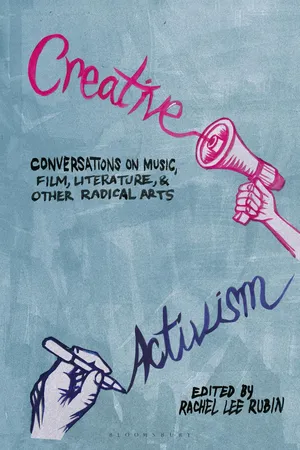![]()
![]()
The trajectory of Billy Edd Wheeler’s life is striking. Born in 1932 in Whitesville, West Virginia, he grew up in a nearby small coal camp called Highcoal. The community, he recalls, was home to about 200 families; it was crowded into a valley and did not receive much sunshine. He learned music from other miners and church singing—not recorded music, because he had no access to that. He received his first guitar from Sears, Roebuck & Company for Christmas when he was 14, and wrote his first song, “Paperboy Blues,” when he was 15.
By the time he was 16 years old, Wheeler had learned first-hand about the drudgery of mining. (He would look back on those days in his often-covered song “High Flyin’ Bird,” which he describes as having roots in youthful daydreams about following birds who soared away over the mountains.) So he worked his way out of the valley and attended high school and junior college in Swannanoa, North Carolina, earning tuition by laboring on the campus. In 1955, he graduated from Berea College in Berea, Kentucky—a tuition-free institution set up to educate students in Southern Appalachia. (Berea, the first college in the US South to be both integrated and co-ed, remains tuition-free today.) While at Berea, Wheeler was asked to contribute a few of his songs to an album of the College’s choir, and through this, music publisher Harold Newman encountered Wheeler’s music; he helped Wheeler sign his first record deal, with Monitor Records. As a result, his first album, Billy Edd, USA, came out in 1961.
From Berea, he went to Yale University’s School of Drama to study playwriting. (He would go on to write and compose twenty plays and musicals, including a folk opera commissioned by National Geographic and three outdoor dramas.) Of those days, he has mused that he was seen (by fellow Yale students) as a “country bumpkin,” but that he was also seen (by fellow Appalachians) as frighteningly intellectual. Arguably, Wheeler proves that these two external definitions are not mutually exclusive in his six books of Appalachian humor, which reveal that those seen as “country bumpkins” are frequently what Italian political theorist Antonio Gramsci would call “organic intellectuals.”
While at Yale, Wheeler would head to New York on the weekends to try to further his musical career, eventually moving there into a one-room apartment with no furniture—not even a bed. This chapter of his life was a fascinating urban follow-up to his uncomfortable mining-town days—but is a significant index of his strong desire to be a successful songwriter. Ultimately, Wheeler’s songs would be frequently recorded by a range of artists. For instance, rock and roll star Neil Young recorded “High Flyin’ Bird” on his 2012 album Americana. Johnny Cash and June Carter’s 1967 version of Wheeler’s song “Jackson” reached number 2 on the Billboard country chart. A range of other musicians have recorded Wheeler’s songs, including bluegrass innovators Flatt & Scruggs, psychedelic rock band Jefferson Airplane, folksinger Judy Collins, and cultural icon Elvis Presley.
While Wheeler has left his mark mostly as a songwriter, he ultimately recorded fifteen albums, including his songs and spoken-word “mountain tales.” He has received numerous awards for his work. Both of his college alma maters conferred on him an honorary Doctor of Humane Letters, Berea in 2005 and Warren Wilson College in 2011. Wheeler was inducted into the Nashville Songwriters Hall of Fame in 2001, the North Carolina Music Hall of Fame in 2002, and the West Virginia Hall of Fame in 2007. He has received thirteen awards from ASCAP, and other awards for his poetry. Wheeler is also an accomplished painter; much of this interview took place in his studio with finished paintings and in-progress works surrounding us.
While the arc of Wheeler’s career is striking for its wideness, his concern about the environmental and labor costs of mining has characterized his work throughout. He frequently talks with dismay about strip mining and mountain-top removal, mournfully noting the resultant destruction of natural beauty. His mining songs have been very influential; for instance, multiple award winning and charting folk-country artist Kathy Mattea, who had two coal-mining grandfathers, recorded an album of eleven mining songs in 2008; three were written by Wheeler. He has written two plays about mining. The first of these, Slatefall (1965), written while he was still a student, describes a tragedy striking a coal-mining community. The second, Mossie and the Strippers (1980), is about a woman who lies down in front of a bulldozer and pours molasses into gas tanks to prevent their tearing up the mountain; the play is based on a historical figure known as Widow Combs, a 65-year-old Kentucky woman who did lie down in front of a bulldozer that was preparing to strip-mine her farm in 1965. In short, Wheeler has an artistic version of what he calls in his most-covered song a “coal tattoo.”
Selected discography
Billy Edd: USA (1961)
Billy Edd and Bluegrass, Too (1962)
A New Bag of Songs (1964)
The Wheeler Man (1965)
Goin’ Town and Country (1966)
Paper Birds (1967)
I Ain’t the Worrying Kind (1968)
Nashville Zodiac (1969)
Love (1971)
Wild Mountain Flowers (1979)
Songs I Wrote with Chet (1995)
Milestones (A Self-Portrait) (2001)
New Wine from Old Vines (2006)
